Choosing a Camera in 2015
So, in my last post I wrote about photography in general, and specifically about what helped me along the very first steps. In this one, I want to share the considerations and decisions that led to me going for the Olympus OM-D E-M10 (can you get all the hyphens right?), a mirrorless camera. Yes, just before 2015 runs out. Since I try and do sustainable blogging though, the broad strokes should stay relevant until the camera landscape changes dramatically.
I’m gonna try and give a quick and reasonably simplified overview of the current landscape in cameras first, how they differ, then describe what I find important interacting with a camera, how I almost setteld for a used DSLR, but then opted for a part of the mirrorless future. At the end I can’t help it and give a few tips on using the E-M10.
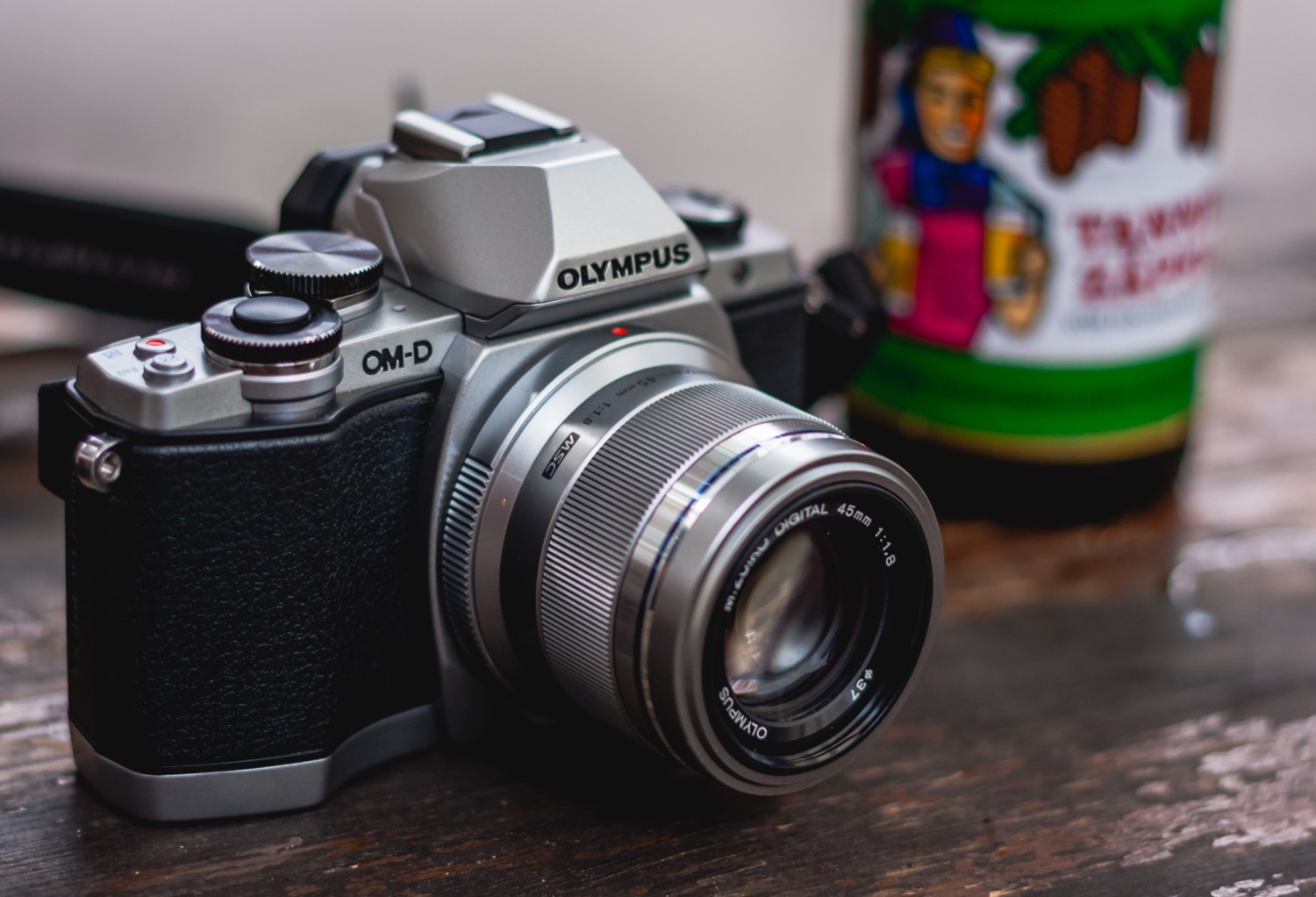
Olympus E-M10, with the Olympus 45mm f1.8 lens – and randomly placed former-hipster-now-mainstream beer
Kinds of Cameras
A little primer on the current field of products: There are DSLRs, which have an optical viewfinder, and because of that (I think), a mirror and a prism. This makes them big and bulky, and kinda heavy. But DSLRs are what professionals still swear by.
DSLRs are the ones with the mirror, so another kind of camera is called mirrorless, of course. This by itself has all the effects on how they’re built and what kind of properties they have. In short: They can be smaller and lighter than a DSLR, but they cannot have an optical viewfinder, and most of them have worse autofocus systems. But technology advances, and mirrorless bodies catch up quickly. They have electronic viewfinders (EVFs) that only get better with time. Anyway, DSLR vs mirrorless is the kind of discussion with sometimes religious undertones in the camera geek community right now.
The Wikipedia definition also throws an “interchangeable lens” property in there, and that distinguishes it from the next kind of camera. Before we get to that, I have to say that there’s not one mirrorless “standard”, since there are a few manufacturers doing their own thing. This isn’t the biggest difference between them, but the lens mount is ultimately the reason for the incompatibility of those systems. So by picking a specific manufacturer, you decide on which range of lenses you want to be able to chose from (just as with DSLRs between Nikon and Canon). There is the Micro Four Thirds system (or MFT, or M43, or µFT) championed by Panasonic and Olympus; there are Fuji’s mirrorless cameras (X-mount lenses), and there’s Sony’s ɑ-series (E-mount lenses).
Anyway, the next kind of camera is, of course, a compact or point-and-shoot camera. These are “mirrorless” as well, but have a fixed lens. While you’re just getting ready to be snobby and disregard these cameras (I certainly would), let me tell you that “compact” – actual surprise! – doesn’t necessarily mean “crappy”. To pick a popular current example: The Fuji X100 models are well-reviewed, loved as a fun camera by seasoned photographers, have a large sensor (more on that later) – and cost over 1000€/$, if that convinces you.
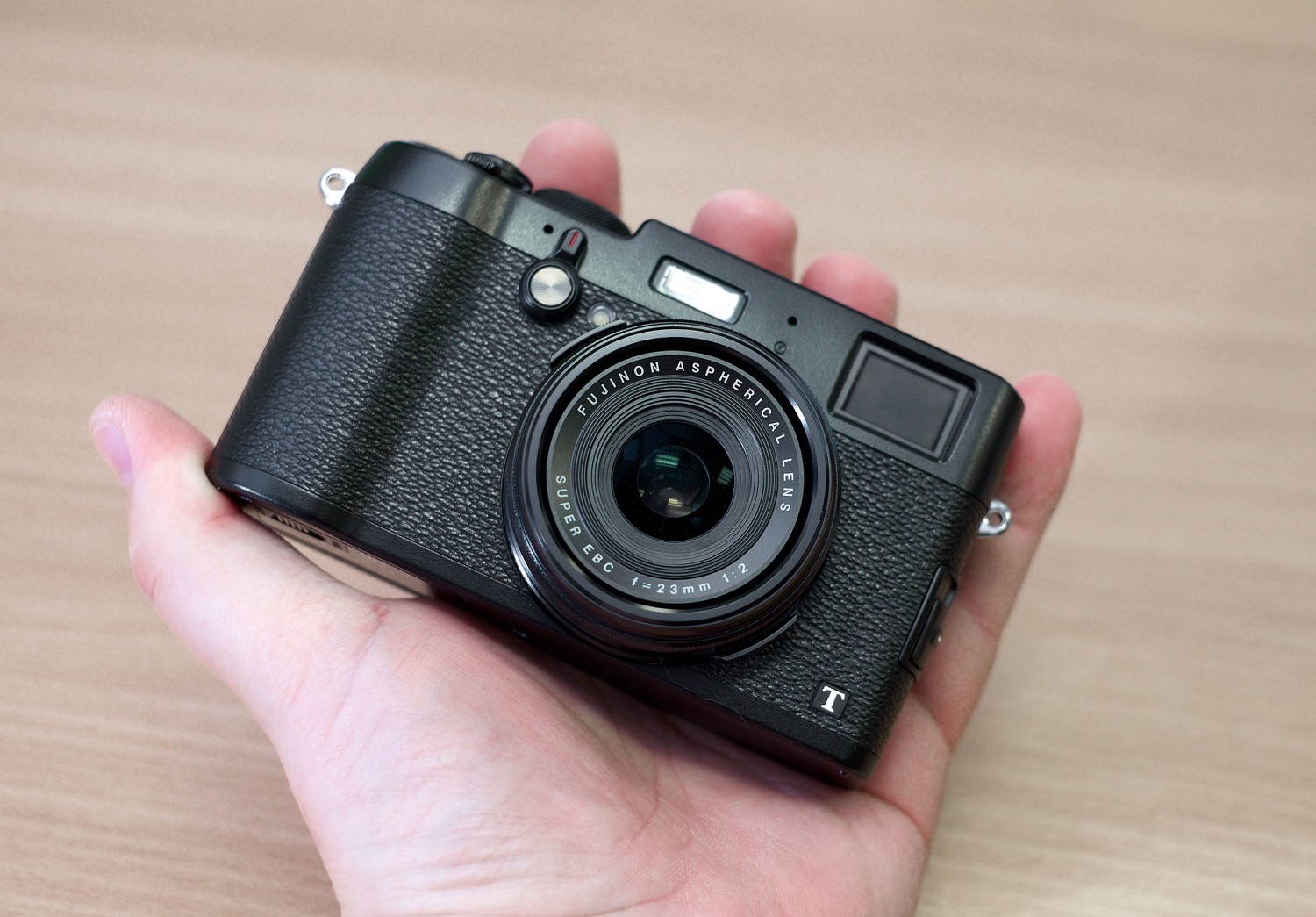
Fuji X100T – photo by Kārlis Dambrāns, used under CC-BY
Kinds of Sensors
When you’re talking cameras and lenses, you almost always are also talking sensor sizes, directly or indirectly. So, why does it matter?
The sensor of a digital camera is what film is in a film camera. And sensors come in different sizes. 35mm film is referred to as “full frame” (“Vollformat”, or perplexingly, “Kleinbild” in German, which translates to “small picture”). High-end DSLRs and some Sony mirrorless cameras have full frame sensors. Everything smaller than full frame is also referred to as a “crop sensor”. A very widespread sensor size is APS-C. Fuji and Sony use APS-C for some of their mirrorless cameras, and it’s also used in most consumer/prosumer-DSLRs. Relevant to my angle here is also the even smaller four thirds size used in the MFT systems mentioned above. Here, the crop factor is 2x, by the way. So if a lens is a 25mm, it has the properties of a 50mm lens on a full frame (35mm – confused yet?) sensor. People talk about 50mm being the “35mm equivalent” of that lens.
These cover the most relevant I think. And just if you were wondering (I was), there’s also something bigger, medium format. You like graphics? Here’s a graphic:
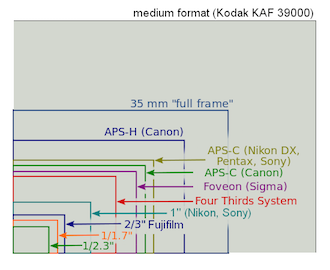
Sensor Sizes by MarcusGR, used under CC BY-SA
The bigger the sensor, the more information it can capture (d’uh). But there are two different ways to go about that: A sensor bigger than another can either be filled with more pixels, or with the same number of, but bigger pixels. More pixels allow for more detail (a.k.a. resolution), bigger pixels allow for more light to be caught (good low light performance, meaning less noise, therefore higher ISO allowing for shorter exposure possible). Those pixels, of course, are the megapixels everyone was talking about a few years ago.
Mix and Match
While there are differences in picture quality, any modern camera’s is sufficient for almost any purpose (If you believe people who know way more about this than me). That makes other factors more important: size and weight, number of dials, lens selection, kind of viewfinder, touchscreen, accentuating screen, Wifi?
Do you want to tap on a touchscreen to focus and take the picture? Then you don’t need an EVF. Do you “just” want to take nicer pictures than your phone allows for? Then you don’t necessarily need any fancy dials and function buttons and probably want the body to be as slim as possible. Do you want nice jpegs out of camera (no processing of the RAW in Lightroom)? People love the Fujis for that. If you just want want want a full frame sensor, you are either looking at a pro DSLR or the more expensive Sony cameras.
Here’s an example: The Olympus E-PL7 and the E-M10 are almost identical looking at the specs. The PL has one manual control dial instead of two, some buttons, a little extra grip and the EVF, but comes with a screen that folds down 180 degrees (sick selfie capability!). These two cameras will take the exact identical picture, though. It’s literally “only” the described differences in the body. Here’s a side by side view, and here is the E-PL7 in all its glory:
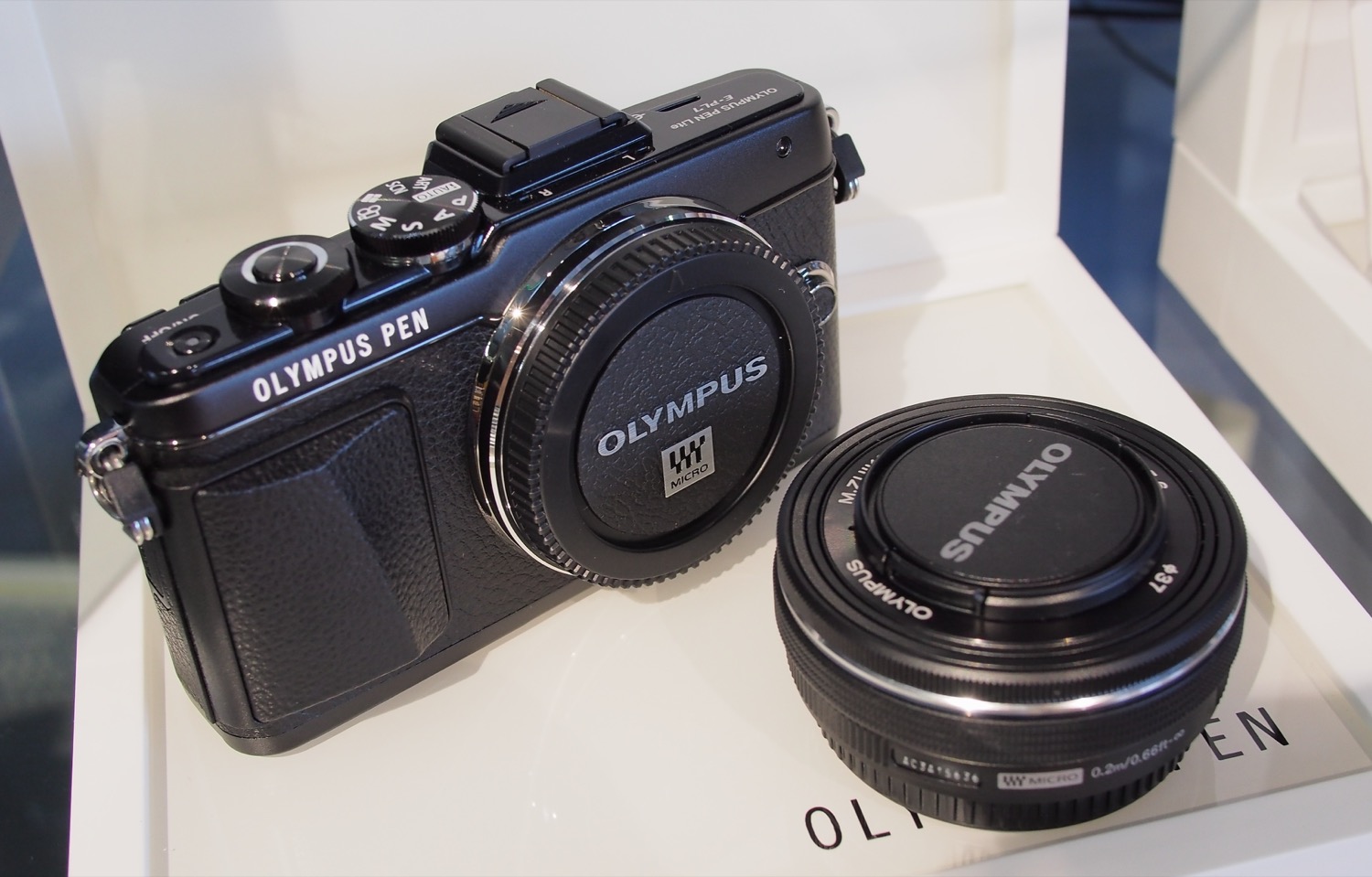
Olympus E-PL7 – photo by PetarM, used under CC-BY-SA
Choosing the E-M10
What helped me figure out that I wanted an E-M10 probably was handling my friend’s 40D. Not that I didn’t like it, actually the opposite: I loved it, especially that it felt like an analog tool, almost like a hammer (yeah, with dials, but still).
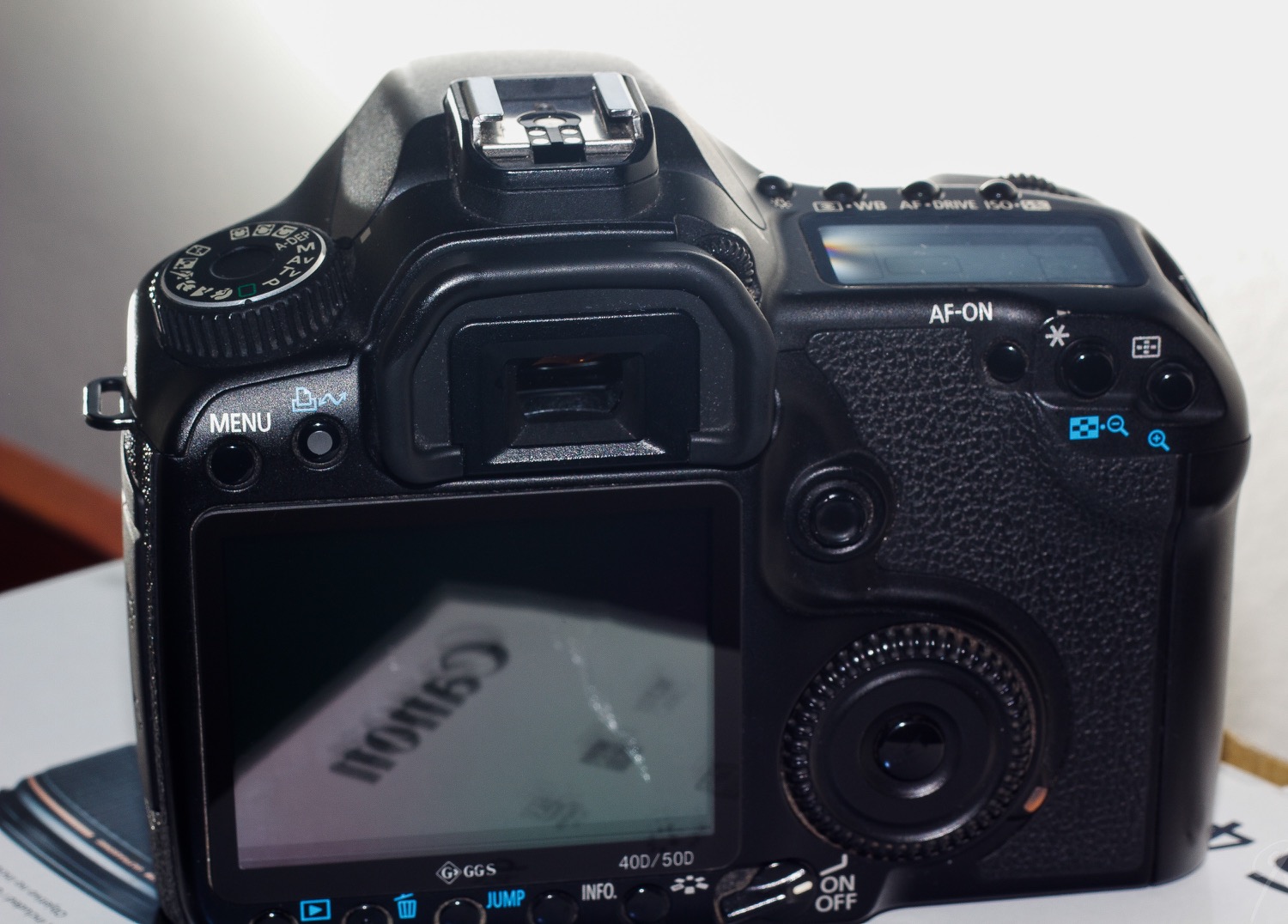
Canon 40D – photo by cubmundo, used under CC-BY-SA
I almost settled for a used 60D, which would’ve cost around 400€ and has some nice improvements over the 40D: More resolution without worse low light performance, more focus points, SD instead of CF cards. That sounded nice to me.
Then, another friend told me she wouldn’t recommend anybody without an investment in Canon or Nikon lenses to get in the DSLR market today. With mirrorless, picture quality is well beyond “good enough”, and there’s a big and affordable lens collection. I remembered Shawn Blanc’s E-PL5 review from one of the times when I was wondering if a “proper” camera would be something for me. Reading his review of the E-M10 then gave me an idea of what it offered that a slimmer camera like an E-PL could leave me wanting.
Anyway, all the advantages of mirrorless cameras kinda came back to me. If only there was one that also gave me what I loved about the 40D! Well, I had the opportunity to fool around with an E-M10 for a few days. By the way: It is the “smallest” in Olympus’ OM-D line, after the E-M5 and E-M1.
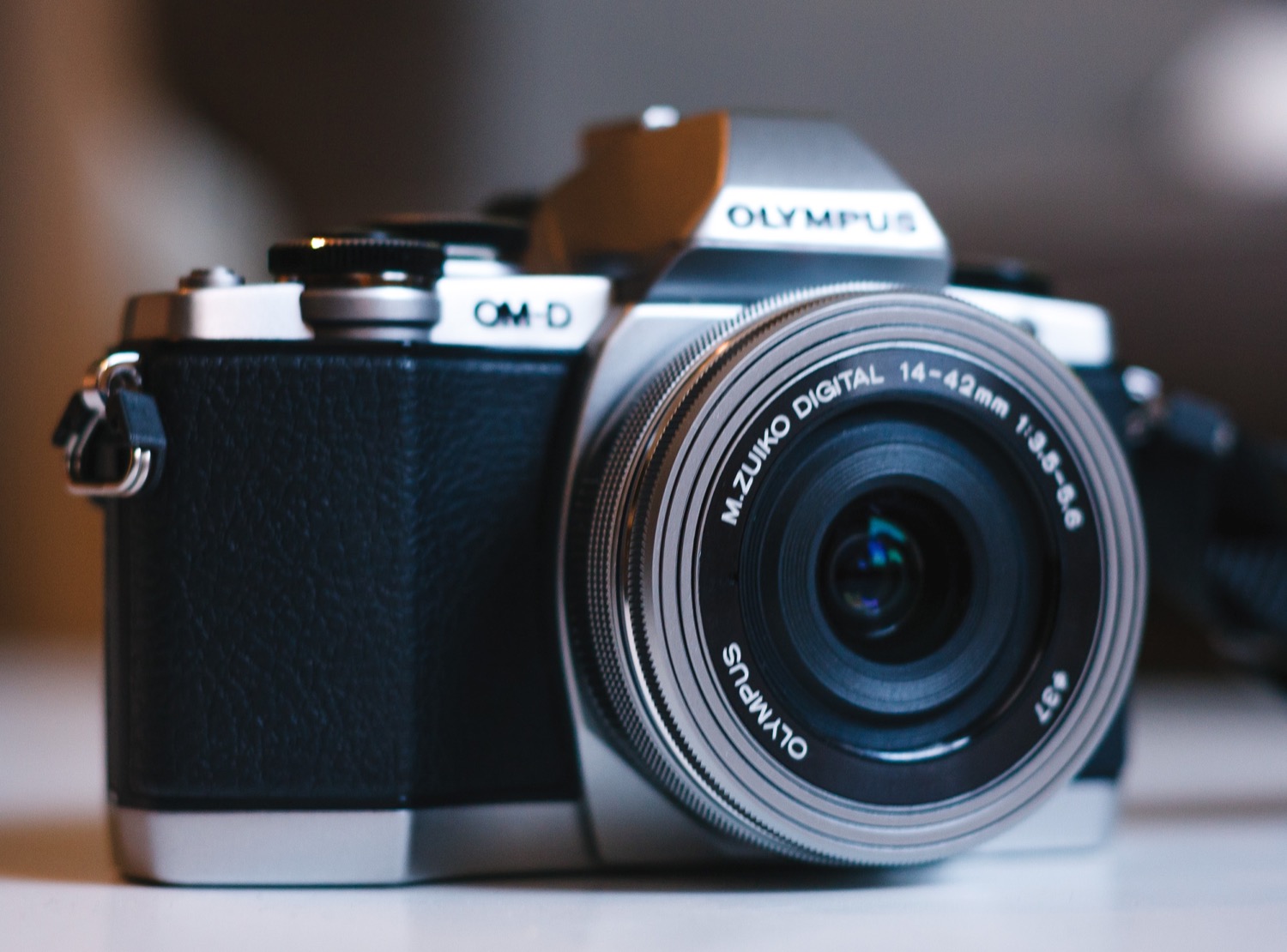
Olympus E-M10, with the Olympus 14-24mm kit lens – compact, but I wanted to go with prime lenses instead of zooms in the beginning
Electronic Viewfinder
What had turned me off the whole mirrorless thing before was the concept of an EVF. I had tried some at a big box reseller, and found them absolutely appalling. Probably very brigh, neon-lit surroundings and misconfiguration were to blame, because I didn’t hate the E-M10’s when I first tried it in real world conditions. I also wasn’t blown away, but it only got better with time.
The lag is not a problem for me at all. The resolution could be better I guess, but it is alright. And then, there are all the advantages that come with it being digital: Different grids to choose from, exposure correction affecting what you see, and looking at pictures you’ve taken or even the menu in the EVF as well – without taking the camera away from your eye. Very handy sometimes.
Dials
I had fallen in love with the big manual control dial on the 40D’s back. I used it for exposure compensation as well as scrolling through pictures, and knew that I didn’t want to miss this kind of control in my own camera. And there needed to be two of these, another one for adjusting the aperture or shutter speed, depending on the mode I’m shooting in.
All of this, I found in the E-M10 as well. As mentioned, it has two dials. In combination with a function button, these also allow for easy changing of the ISO and white balance without digging into a menu.
AF Point Selection
Another thing that I liked about the 40D was the little knob-thingy above the control dial for selecting the focus point. It only has 9 of them, so with one push in the right direction, the right focus point was selected.
The E-M10 has 81 focus points. Guess what doesn’t work with 81 focus points: Pushing once to select the right one. So you have to use the 4-way dial on the camera’s back, which for me is the weakest spot in day to day use. Pressing the dial ten or twelve times to get to the right point for the specific shot just isn’t fun. But it is possible without taking the camera from your eye, so it’s acceptable for me. The E-M10 II (released in August this year) goes at this with a touchscreen that acts as a trackpad (“AF targeting pad” when you hold the camera up. I don’t know how well that works, but the solution probably is somewhere along those lines. (I guess this is where the focus-and-recompose photographers cheer.)
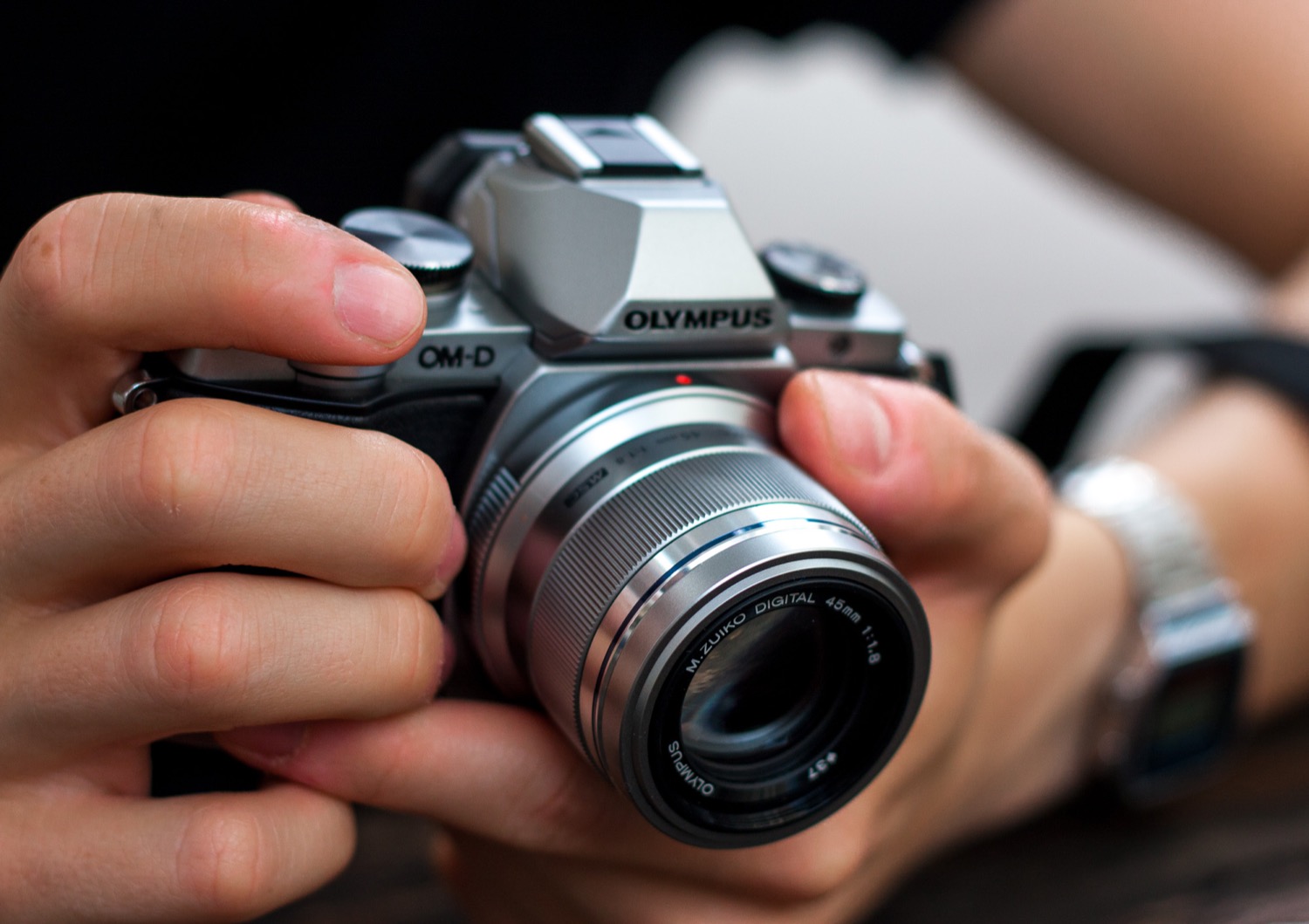
Olympus E-M10, with the Olympus 45mm f1.8 lens – photo by Silvan Dähn
Handling the E-M10
Because I’m overall endorsing the E-M10 here, I feel that I have to express a warning: The Olympus menus are a mess. They clearly stand in the way of the camera’s potential. A lot of stuff is possible with custom button and dial configurations and modes and settings etc., but it takes dedication to get there. Just a warning. These help: Here’s a guide in German, here’s a shorter overview, and this DPreview thing about the E-M5 also mostly applies to the E-M10.
Another gripe: although Auto ISO is a nice feature, it is badly implemented: The camera is way too conservative with the ISO and doesn’t let you take full advantage of the excellent IBIS (in-body image stabilization). DPreview has a workaround that makes it a little better. I still mostly set the ISO manually. This would be the second most annoying thing about the E-M10 for me, after the AF selection. But it’s a pure software thing, which makes it more incomprehensible that Olympus doesn’t just fix it with an update.
Enough with the negative though. There’s talk about the short battery life with mirrorless cameras. While you are not gonna get close to a DSLR’s, I found very long shooting sessions with several hundred (ca. 500 with one charge? I don’t remember for sure, but up there somewhere) exposures were no problem at all, meaning it’s not close to annoyingly short for me. With the E-M10, the key is to use the EVF and have the main screen not act as a viewfinder and suck battery when you don’t even need it. This way, waiting for a shot, you can dial the settings in, and the camera just lights up a display instead of transmitting the sensor image to the screen as well.
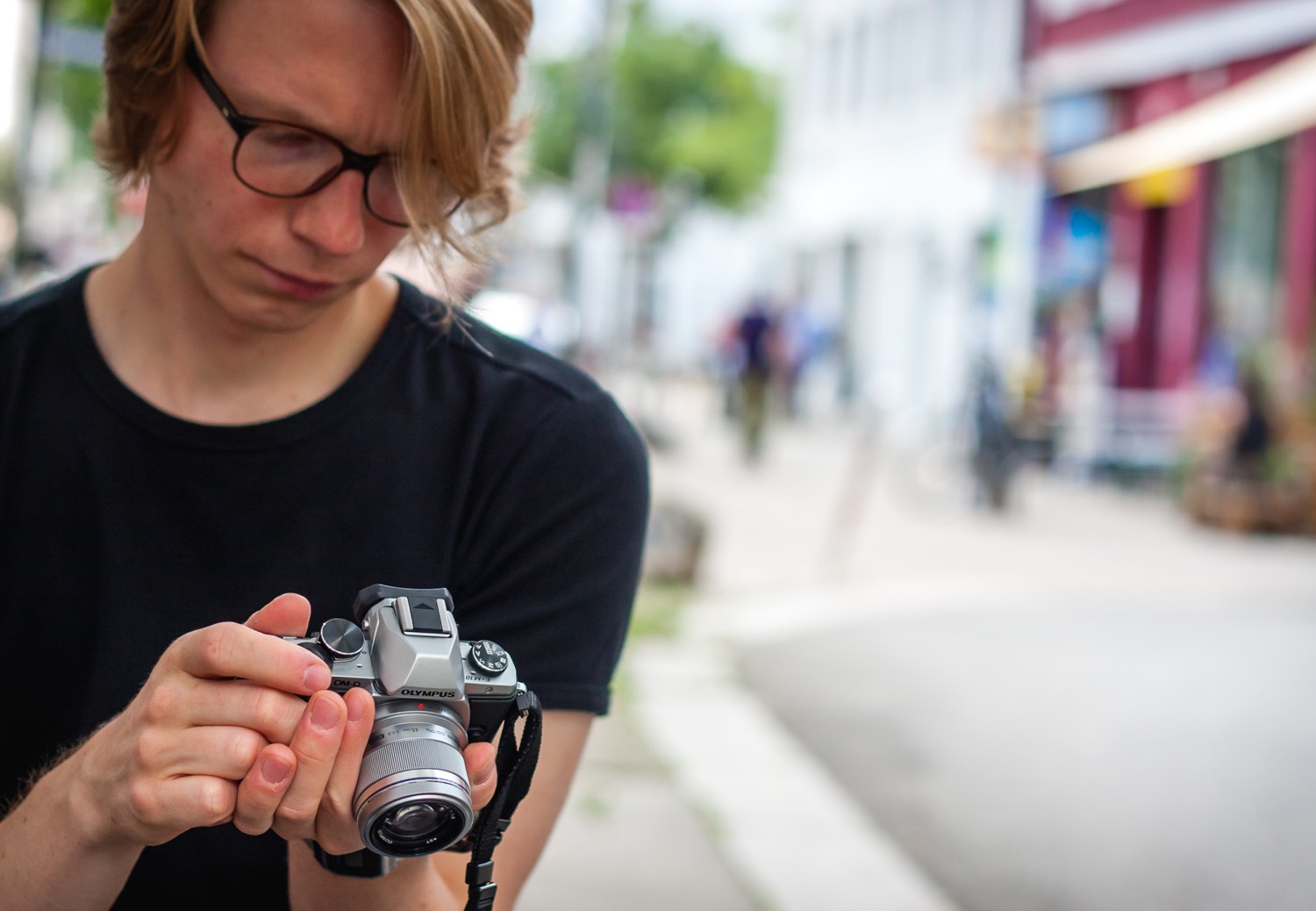
Olympus E-M10, with the Olympus 45mm f1.8 lens – and me, not knowing how to hold a camera – photo by Silvan Dähn
Closing thoughts
I hope this is a useful overview and example of what could be important to think about in a new camera. I’m only a few months in with my E-M10, but I’m exceedingly happy with it.
When I got the E-M10 Mark I, it was the best deal, no question. Now, it actually got a bit worse, and the Mark I and II are closer together now, within about 150€. If the small improvements sound interesting to you, maybe that’s worth it. Check out DPreview’s E-M10 Mark II review. A used E-M5 might also be an option, if you can stomach the lack of Wifi.
If you’ve made it this far, you must be really interested. If you’re already looking for lenses, the Wirecutter has a good piece, worth a read.